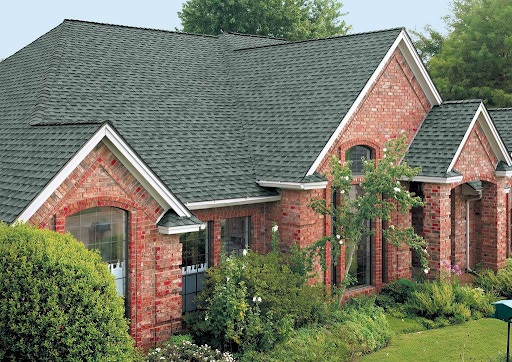Let’s face it – nobody wakes up excited to spend money on a new roof. It’s one of those necessary evils of homeownership that often comes with sticker shock. Between materials, labor, permits, and those inevitable “surprises” once work begins, the final bill can make your head spin.
Homeowners often put off making that dreaded call to a Los Angeles roofer because they’re anxious about costs. This waiting game might save money today, but it’s playing with fire. Water doesn’t politely wait at your roof’s edge – it sneaks in, causing hidden damage that multiplies repair costs down the road.
Table of Contents
The Price Tag Puzzle: What Makes Roofing Costs Swing Wildly?
Ever wonder why your neighbor’s roofing project cost half what you were quoted? Several moving pieces affect the bottom line:
Size & Complexity – Roofing isn’t priced like carpet by simple square footage. Those picturesque angles and slopes on your home? They’re budget-busters. Each valley, chimney, skylight, or ventilation pipe creates extra work zones where leaks love to form. More complicated = more expensive, period.
Material Matters – Basic asphalt shingles might run $4-6 per square foot installed, while clay tiles or metal systems can shoot north of $15-20. The premium stuff isn’t just about looks – better materials resist our SoCal sun beating down year-round and stand up to those surprise winter deluges.
What’s Hiding Underneath – Sometimes you’ve got more than one layer of old roofing that needs removal. Or worse, water might’ve been playing its slow-destruction game on your roof deck for years. The “we won’t know until we tear off the old roof” factor makes solid estimates tricky.
Worker Experience – Sure, the guy offering to reroof your place for half the going rate sounds tempting. But experienced Los Angeles roofers aren’t just charging more for fun – they’re avoiding the amateur mistakes that lead to callbacks, leaks, and premature failures. A bargain today often becomes tomorrow’s nightmare.
The “Oh By The Way” Costs Nobody Mentions Upfront
Want to spot a questionable roofing quote? Look for what’s missing. These commonly overlooked expenses often appear as “extras” after you’ve signed:
The Permit Dance
Los Angeles building departments don’t mess around with roofing permits – and for good reason. Skip this step and you might face fines or hassles when selling your home. Legitimate contractors pull proper permits, which adds:
- Base permit fees ($400-700 depending on project scope)
- Possible plan check fees for complex jobs
- Inspection scheduling headaches
Some contractors bury these costs in their quote, while others list them separately. Neither approach is wrong, but you deserve to know what you’re paying for.
The Rot Lottery
This scenario happens constantly: Crew removes old shingles, then the foreman knocks on your door with that apologetic look. “Found some rotted plywood… needs replacing before we continue.”
Suddenly your budget is stretched by another $1,000+.
Smart homeowners ask potential roofers:
- “What percentage of jobs end up needing deck repairs?”
- “How much do you charge per sheet of plywood replacement?”
- “How do you document and approve these extra charges?”
Good roofers shoot straight about the likelihood of finding damage based on your roof’s age and visible warning signs.
The Dump Run Reality
That old roof has to go somewhere, and disposal in the city of Los Angeles ain’t cheap. A typical single-family home generates 2-4 tons of roofing waste. Proper disposal includes:
- Dumpster delivery/pickup (often $350-550)
- Landfill fees (rising every year)
- Extra labor for cleanup and property protection
Bargain hunters beware: Some lowball quotes assume minimal disposal needs or cut corners with improper disposal methods.
Paying For It Without Selling Your Firstborn
The sticker shock of roofing projects hits hard. Most families haven’t set aside $15K+ for a rainy day that ironically involves stopping rain from getting in. Your options typically include:
Insurance Coverage – If storm damage caused your roofing woes, your homeowner’s policy might foot most of the bill. The catch? Insurance companies rarely make this process simple. Ask potential roofers:
- “Do you help document damage for insurance claims?”
- “Will you meet with my adjuster during inspection?”
- “How do you handle the inevitable back-and-forth with insurance companies?”
The right roofer becomes your advocate in this process, not just another voice saying “not my problem.”
Payment Plans – Many established roofing companies offer financing plans, sometimes with attractive terms like “12 months same as cash.” Always compare these to your other credit options – sometimes a home equity line or personal loan offers better rates.
Off-Season Deals – Los Angeles has a somewhat milder roofing “season” than other parts of the country, but winter months (especially rainy ones) see slower business. Scheduling your non-emergency roof work during these downtimes might save 10-15% through special promotions.
Balancing Act: Budget vs. Quality
Your roof isn’t just another home component – it’s your primary defense against the elements. When that protection fails, everything you own becomes vulnerable.
While budget realities can’t be ignored, viewing your roofing project as a long-term investment rather than an expense changes the decision-making process. The right balance between affordability and quality varies for each homeowner, but the cheapest options almost always cost more over time.
By approaching roofing conversations armed with these cost considerations, you’ll sidestep the pitfalls that trap many Los Angeles homeowners and make decisions you won’t regret when the next major storm hits.
